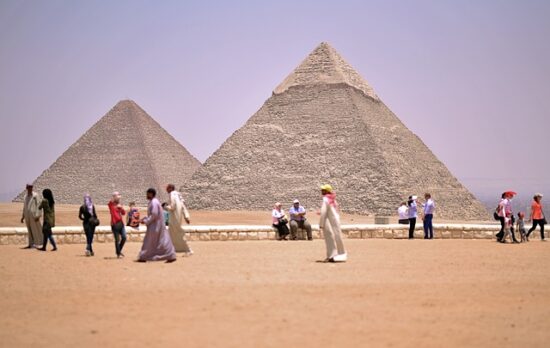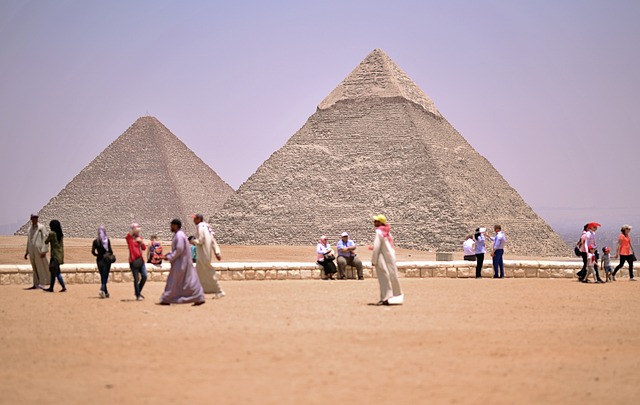Egyptian culture is perhaps one of the most complex and intriguing cultures that ever existed. Starting with the discovery of the pyramids, remarkable tombs for the ancient Pharaohs, the entire world has been fascinated by the mysterious world surrounding Egypt in ancient times. It was an era of mystery, upon which archaeologist have yet to shed light. Nevertheless, a lot of extraordinary facts have been discovered about Ancient Egypt and few of them are presented in the following article. So, if you want to enter the mysterious world of the pyramids by reading Ancient Egypt Facts for Kids, this is the place to start.
Ancient Egypt Facts For Kids
1. Where is Egypt located?
Egypt is a transcontinental country, which means it spans over two continents, Africa and Asia. However, most of its territory is situated in northeastern Africa.
2. Where were the Ancient Egypt settlements?
Since Egypt is a very dry country, with deserts and very little rain, Ancient Egyptians first settled, in the year 5000 B.C, on the banks of the river Nile. This river was referred to as “the gift of the Nile”, because it was the only source of water and food and also provided means of transportation.
3. Ancient makeup?
In Ancient Egypt women were not the only ones to wear makeup. Men also wore green or black eye-paint. However, they had other reasons for wearing it: makeup was thought to have healing powers and to protect against sunburn.
4. Hair in Ancient Egypt
Pharaoh never let anyone see their hair. It was covered either by a crown or a headdress. Rich Egyptians used to have wigs on their heads, while lower classes kept their hair long. Until the age of 12, Egyptian boys were shaved so they wouldn’t get lice.
5. The first pyramid
The oldest pyramid ever discovered is the Step Pyramid of Djoser. It is believed to have been built around 2600 BC.

6. How mummies were made…
It is believed that Egyptians were doing deliberate mummification as early as 3500 BC. After death, they used to pull out brain and various similar organs from inside the corpse but not the heart, which was believed to be the seat of the soul. Each of the removed organs was placed in a jar. Afterwards, the body was filled with spices and salts to dry and preserve it and anointed with different perfumed oils. In the end, strips of linen and a canvas were wrapped around the body and different amulets and jewelry were placed to protect the dead from evil.
7. Clothing
Due to the intense heat, Egyptians wore little clothing. Men would have on short skirts while women used to put on dresses. Children would not wear clothing at all until they reached adolescence.
8. Was Cleopatra Egyptian?
As surprising as it may sound, Cleopatra was not Egyptian, but Greek. She actually descended from a line of Greek Macedonians who ruled Egypt since 323 BC until 30 BC.
9. Egyptian pets
The commonly held belief is that Egyptians had been worshiping cats which is why they used to keep them in their homes. Cats were believed to be the incarnation of the Egyptian goddess Bastet and bring blessings to the home. Other Egyptians’ pets include baboons, hawks, lions and ibises. These animals were so valued, that some of them were mummified after death.
10. Marriage
The Egyptian culture surprises us here too. Egyptians didn’t have wedding ceremonies because they were considered husband and wife from the moment when the bride would move her things in the house of the groom. However, some of the findings suggested that they did prenuptial agreements.
11. Women’s rights
Egyptian women were extremely independent. Although socially they weren’t considered equal to men, they had economic freedom. Unlike Greek women, which were considered property of their fathers and later their husbands, Egyptian women could work and receive the same payments as men, like making wills and legal contracts or getting divorced and to remarry.
12. Insects and parasites
Parasites and insects were a big problem for the Ancient Egyptians. Examinations show that the most common was the Guinea worm, which resided in the body until it would reach three feet, then ooze though the skin. According to some research, pharaoh Pepi II of Egypt used to have naked slaves smeared in honey in order to keep away the flies.


Leave a Reply